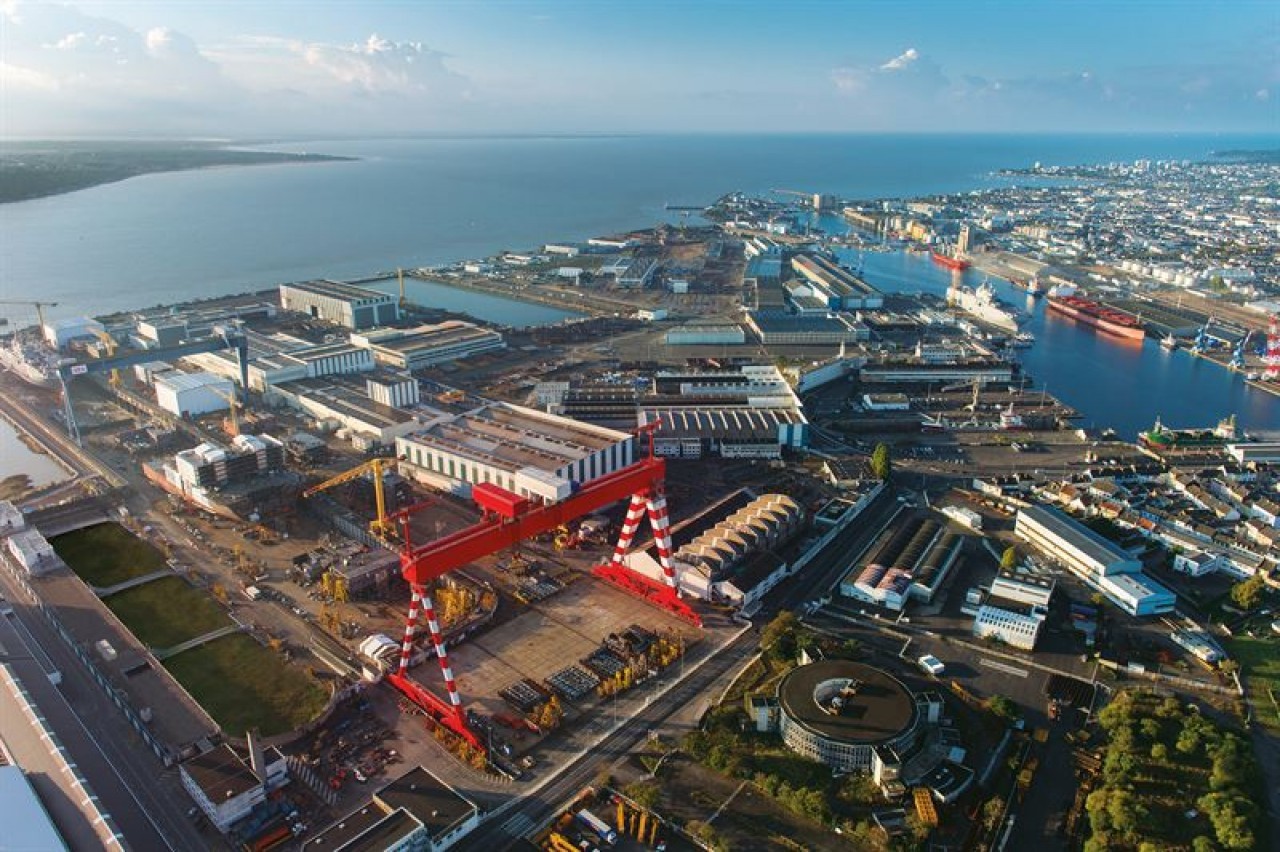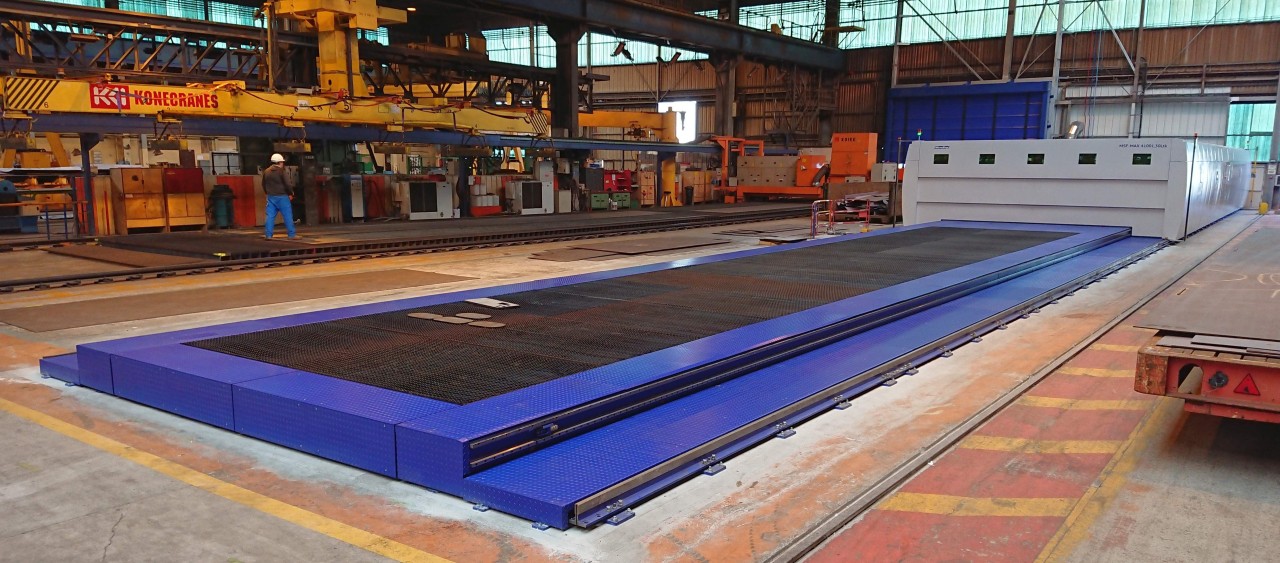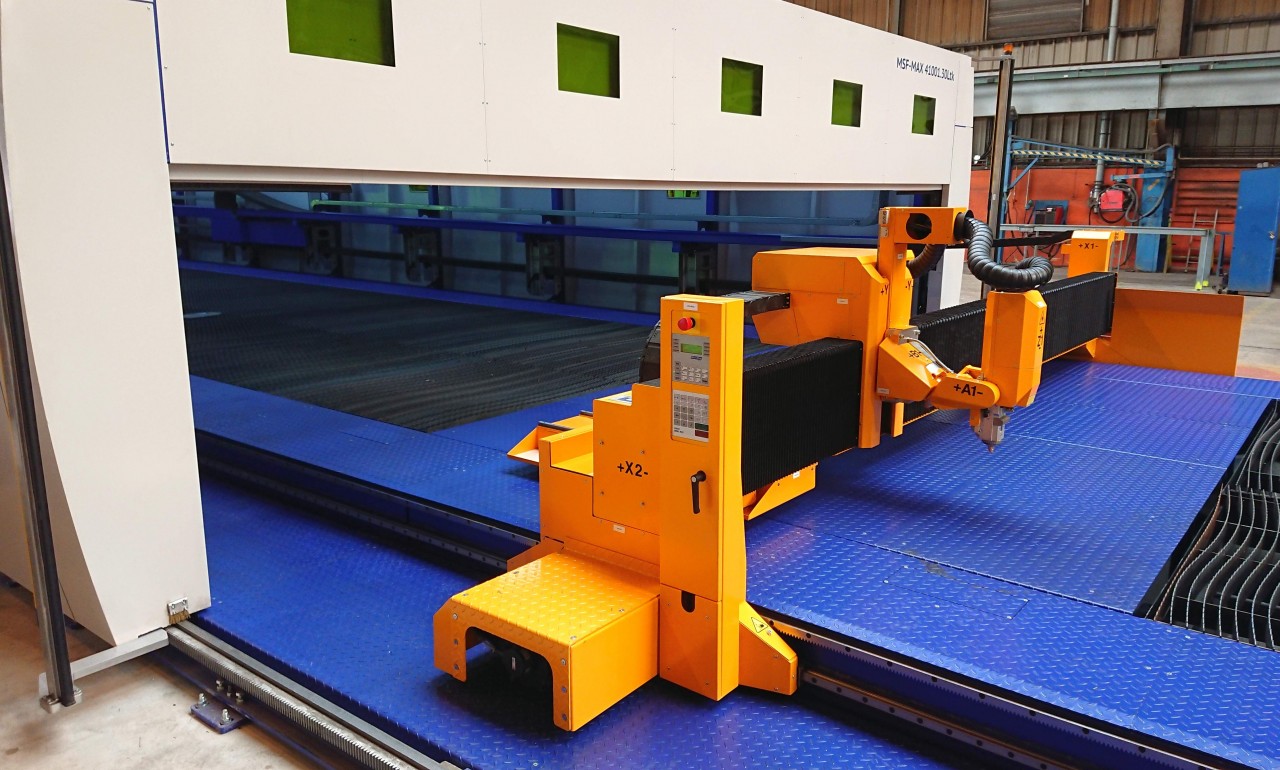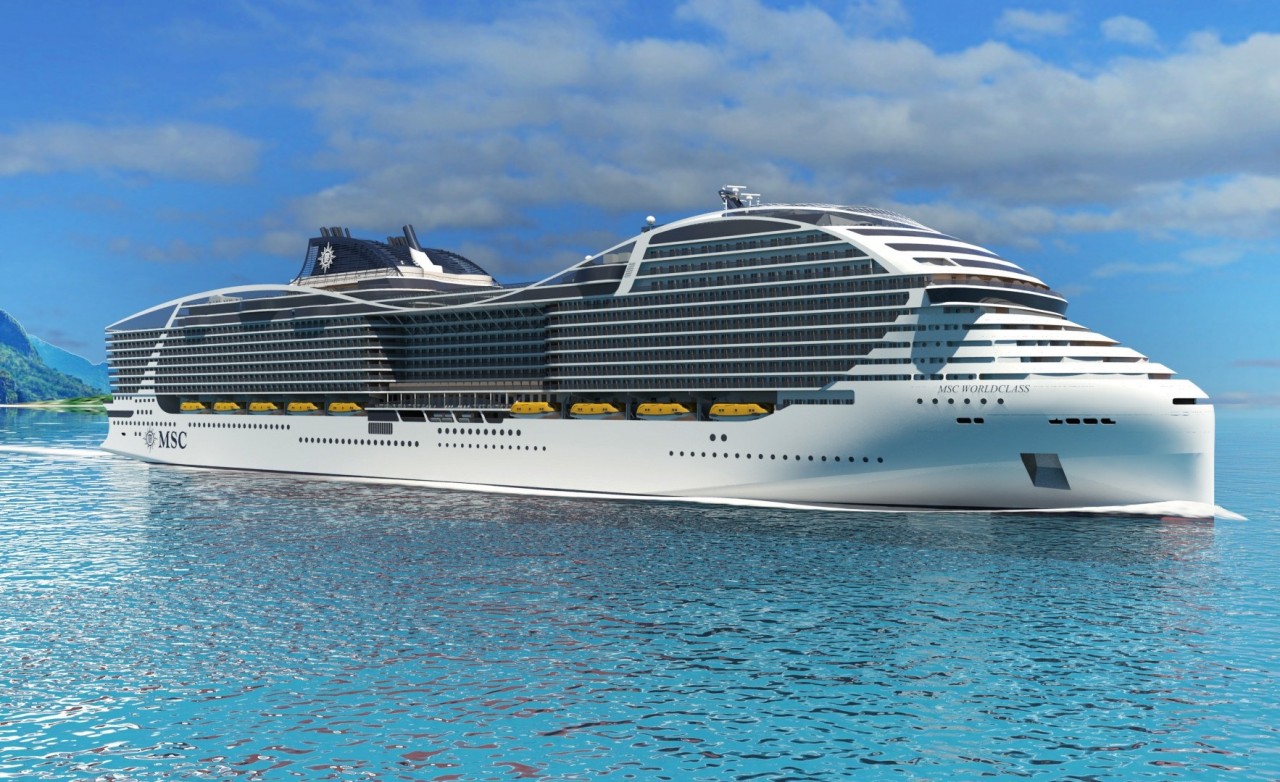Up to 150 years ago, Saint-Nazaire was just a simple harbor village on shore of the Atlantic Ocean. Its strategic location near the mouth of the river Loire has proven vital with the arrival of the industrial revolution. In 1861 John Scott from the Scottish shipyard in Greenock has been appointed to establish a new shipyard and to supervise the construction of the very first ship lmperatrice Eugenie, which was delivered only three years later in 1864.Since then, shipyards in Saint-Nazaire have been undertaking colossal projects that often require the latest achievements of science in order to be feasible. With this context it is no surprise that, over the years, this small French town has become the birthplace of some of the largest ships of their times. Just this year in March, Symphony of the Seas, the largest cruise ship ever built, has left the port of Saint-Nazaire for its maiden voyage.

Today the shipyards have more than 2,700 employees and more than 500 subcontractors bringing another 5,000 workers on the site every day. Working in a shipyard can be a very demanding and exhausting job, even for a soulless machine without human needs and cravings. If you are building the world's largest cruise ship you will most likely need big parts, which need to be cut out with great accuracy, and you have to cut a whole lot of them. "We cut about 1,600 meters of material every day," says Project Manager Silvere Destrem.
After some consideration, Chantiers de l'Atlantique opted to invest into a large-scale fiber laser cutter, the MSF Max. It is a SO m long machine with two 21,000 x 3,500 mm large cutting zones. The work area consists of suction tables sunk into the ground of the production hall to allow easy access onto the grates during loading and unloading. The suction table is divided into electronically controlled zones with pneumatical opening of flaps that ensure high suction efficiency and allow customized setting of zone opening times.
 "The idea was to improve our workshop with a modern and efficient machine"
"The idea was to improve our workshop with a modern and efficient machine"The older CNC laser machine at the shipyard was a CO2 type. Even though CO2 lasers have certain advantages, such as the ability to cut different materials and deliver smoother cut surface especially in bigger thicknesses, they are less efficient and require regular maintenance of the laser beam path, with the setup and alignment of the mirrors in the beam path limiting the maximum length of the machine setup. For larger-scale applications, the CO2 laser source needs to travel with the gantry while maintaining beam path geometry at a required precision. That brings several design and production challenges - the more complicated the system, the more demanding it is in terms of maintenance and the higher is the probability of downtimes. "The idea was to improve our workshop with a modern and efficient machine," explains Mr. Destrem. Fiber laser technology eliminates several of CO2's setbacks. Its efficiency is much higher and the optical fiber that guides the laser beam is not limited by length and requires almost no maintenance. "An easy-to-use-and-maintain concept was an important criterion in our decision process."
The machine is equipped with a 3D bevel cutting head with an 8 kW laser source that allows Chantiers de l'Atlantique to make weld edge preparation on parts up to 20 meters long and up to 16 mm thick with bevel angles ranging up to 45°. The system is easy to use and maintain: accuracy and long-term stability of the machine's geometry that is essential for accurate bevel cutting is ensured by MicroStep's patented auto-calibration system ACTG®. All the operator needs to do is to swap the cutting nozzle with a calibration jig and initiate the automatic calibration process - if any inaccuracies are detected, the machine will automatically adjust its movements to compensate for the measured mechanical deviations.
 After a few months in production the feelings are positive.
After a few months in production the feelings are positive.Because of the large machine size in this particular case, the ACTG calibration station is placed in a combined technological station that is mounted directly on the gantry and is ejected during the calibration process. The station also contains other equipment - a pad for calibration of the capacitive height sensor inside the laser head, as well as a nozzle cleaning system consisting of a camera and a wiping brush. In addition, high absolute accuracy of the machine (approx. 0.2 mm at room temperature) has been ensured by a positioning tolerance compensation feature, based on precise initial machine measurement with a laser tracker device.
After a few months in production the feelings are positive. "The quality of the cut pieces is better than with our old machine. The efficiency has increased. We have the opportunity to make the production evolve towards new products," concludes Mr. Destrem.








